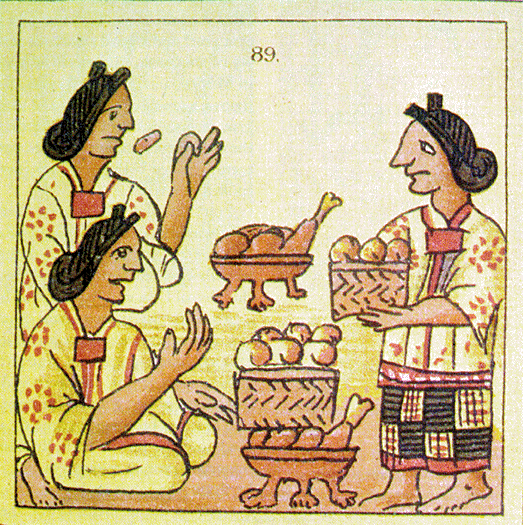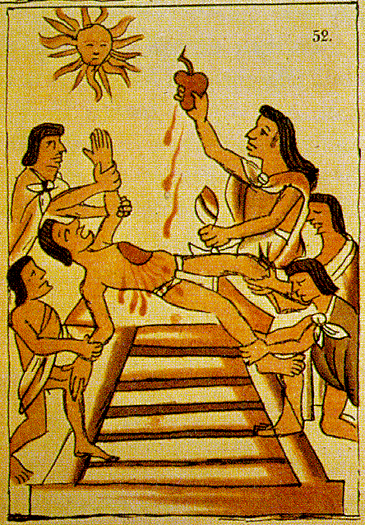|
Background
The Aztecs were an ancient civilization who called parts of Mexico and California home, and many people living in those
areas today can trace their lineage back to these fascinating people. After founding their empirical city, Tenochtitlan,
the Aztecs experienced a growth in their population and by the early 1400's they ruled the entire region surrounding
their capital city. Their civilzation fell due to the Spanish invasion, which the Aztecs did not oppose as
they though the Spanish to be a god, Quetzalcoatl.
Culture
Art, music, and tattoos were extremely important to the culture of the Aztecs. They used these cultural items
as a way to show their devotion to the gods and as a way to please them. Each of these, art, music, and tattoos, were
usually used in religious rituals. One interesting fact about the music played during these ceremonies, is that the
music played was suppose to be holy music so those who made a mistake were seen as offending the gods. The punishment
for this, just like any other mistake that offended the gods, was death.

|
| Daily Aztec life. |
|
 |
|
|
|
 |
|

|
| Image depicting sacrifice. |
Religion
A part of the relgious legnds of the Aztecs is the belief in a hierarchy of gods. The top level of gods, for those
who belief in the Aztec religion, are three gods who's names are Huitzilopochtil, Tezcatlipoca, and Quetzalcoatl. Below
those three gods were four sub-gods, and below those four were an infinite number of gods.
An important aspect of the Aztec religion is the belief that the proper way to please the gods was through nourishing
them by using humans. This was normally accomplished by having people intentionally harm themselves as a way to draw
blood as a way to sacrifice. The people of the highest stature in the community were expected to give the most blood
during these rituals. Gods also required living hearts of humans too, and the bravest captives were usually the ones
that were most used. Because of this, war was often fought as a way for them to supply captives for their religious
rituals.
|
 |
|
|
|

